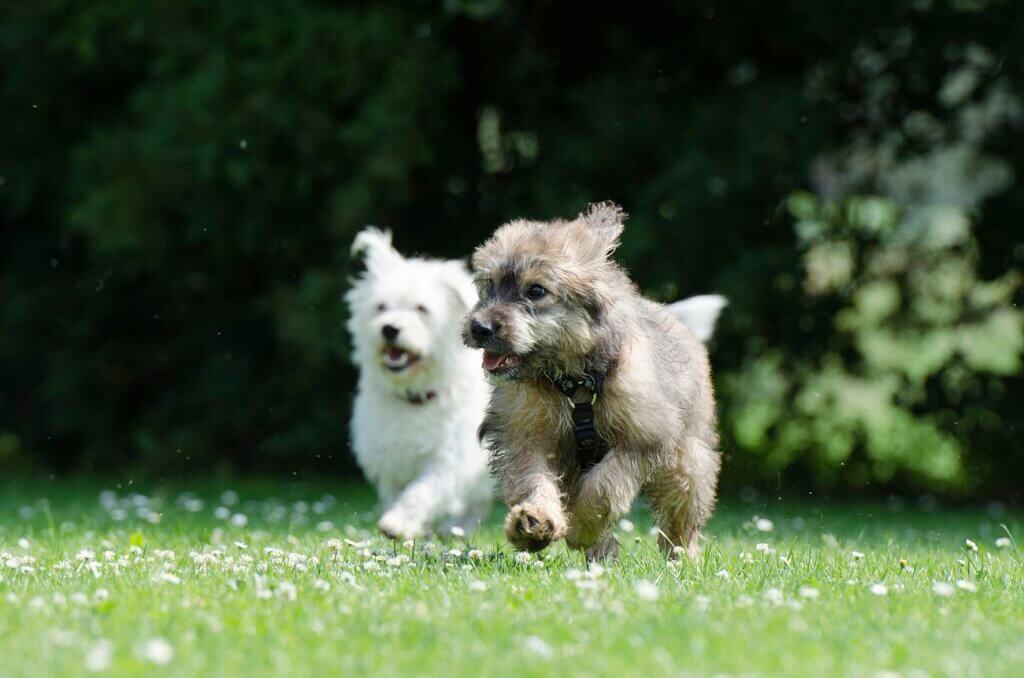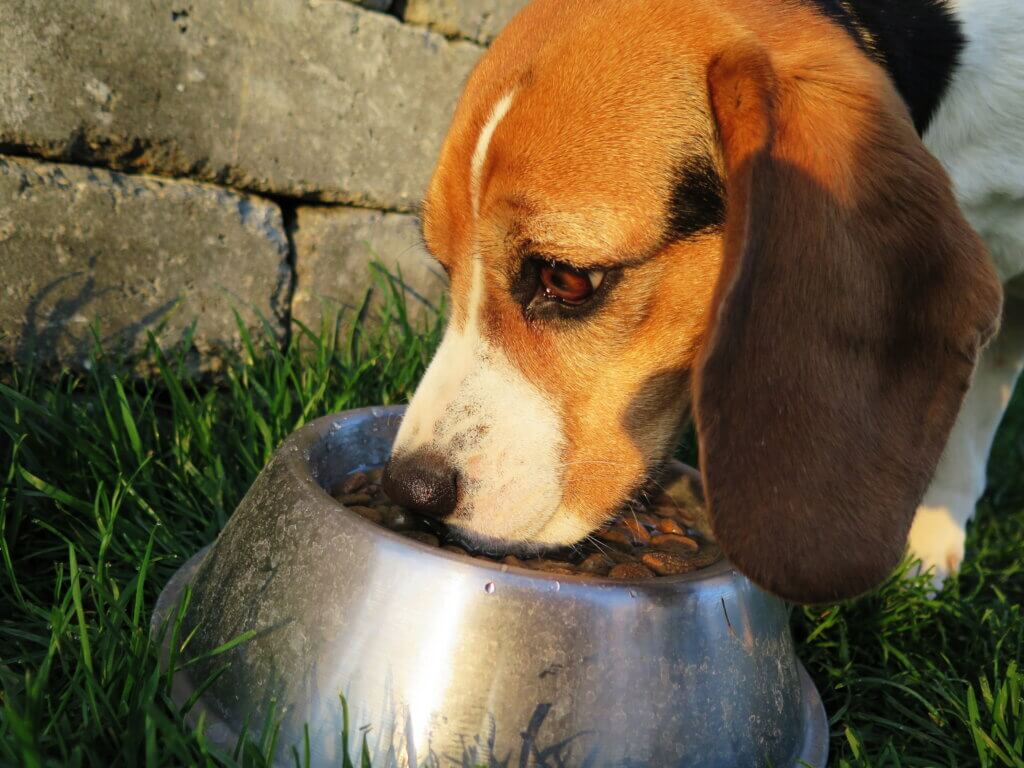How Much Wet Food to Feed a Dog
Ensuring your dog gets the right amount of food is crucial for their health and well-being. When considering how much wet food to feed a dog, it’s important to understand their nutritional needs. It is crucial to gradually switch your dog’s diet to prevent unpleasant stomach issues. Abrupt changes in diet can lead to potential risks such as stomach upset, diarrhea, and refusal to eat.
This guide will explore the factors influencing how much wet food to feed a dog, including age, size, breed, and activity level. Understanding these elements will help you determine the correct portion sizes for your furry friend. Additionally, we will provide general feeding guidelines, tips on establishing a consistent feeding schedule, and advice on monitoring and adjusting food intake as needed.
By following these guidelines, you can ensure that your dog receives the proper nutrition they needs to stay healthy and happy. Whether you are new to dog ownership or looking to improve your dog’s diet, this comprehensive guide will offer valuable insights into how much wet food to feed a dog, helping you make informed decisions for your pet’s health.
How Much Wet Food to Feed a Dog Based on Guidelines

| Dog Weight (kg) | RER (kcal/day) | Activity Factor | MER (kcal/day) | Caloric Content of Wet Food (kcal/100 g) | Daily Portion (g) |
| 5 | 70 × (5)^0.75 = 236 | 1.2 – 2.0 | 283 – 472 | 100 | 283 – 472 |
| 15 | 70 × (15)^0.75 = 497 | 1.2 – 2.0 | 596 – 994 | 100 | 596 – 994 |
| 25 | 70 × (25)^0.75 = 703 | 1.2 – 2.0 | 844 – 1406 | 100 | 844 – 1406 |
Practical Examples of Daily Portions Based on Dog Weight and Age
| Example | Dog Weight (kg) | MER (kcal/day) | Caloric Content of Wet Food (kcal/100 g) | Daily Portion (g) |
| Small Adult Dog | 5 | ~300 | 100 | 300 |
| Medium Adult Dog | 15 | ~600 | 100 | 600 |
| Large Puppy | 25 | ~1200 | 100 | 1200 |
By following these guidelines and using practical examples, you can better understand how much wet food to feed a dog. Ensuring you provide the right portion size will help maintain your dog’s health and energy levels. Always adjust the amount based on your dog’s specific needs and consult with your veterinarian for personalized advice.
How Much Wet Food to Feed a Dog: Detail Guide
Determining how much wet food to feed a dog can be straightforward if you follow general feeding guidelines and consider several key factors. Here are some pointers to assist you in selecting the best option:
General Feeding Guidelines and Portion Sizes
Most dog food manufacturers provide general feeding guidelines on the packaging. These guidelines typically offer recommended portion sizes based on your dog’s weight. For example, the label might suggest feeding a certain number of ounces or cans per day for dogs of different weight ranges. It’s a good starting point for figuring out how much wet food to feed a dog.
Manufacturer Recommendations and Reading Food Labels
Reading the food labels and manufacturer recommendations is crucial. These labels provide important information about the calorie content per serving and specific feeding instructions. The labels often include a feeding chart that considers your dog’s weight and gives a daily portion recommendation. This helps you accurately determine how much wet food to feed a dog according to the specific brand and type of food.
Calculating Caloric Needs
To precisely determine how much wet food to feed a dog, you can calculate their daily caloric needs. This entails being aware of the maintenance energy need (MER) and resting energy requirement (RER) of your dog.The RER is the number of calories needed for basic bodily functions at rest, while the MER considers additional calories needed for activity.
Here’s a basic formula to calculate RER:
RER(kcal/day)=70×(weight in kg)0.75\text{RER} (kcal/day) = 70 \times (\text{weight in kg})^{0.75}RER(kcal/day)= 70×(weight in kg)0.75 For an active dog, multiply the RER by an activity factor (typically ranging from 1.2 to 2.0) to get the MER. Once you know the total daily caloric requirement, you can use the calorie information on the wet food label to determine the appropriate portion size.
Practical Examples of Daily Portions Based on Dog Weight and Age
Let’s look at some practical examples to illustrate how much wet food to feed a dog:
- Small Adult Dog (5 kg): If the wet food contains 100 kcal per 100g, and the dog needs approximately 300 kcal/day (RER x activity factor), you would feed them 300g of wet food daily.
- Medium Adult Dog (15 kg): For a dog needing around 600 kcal/day, with the same food, you would provide 600g of wet food each day.
- Large Puppy (25 kg): Puppies often need more calories for growth. If the required daily intake is 1200 kcal, you would feed 1200g of the wet food, assuming it has 100 kcal per 100g.
By following these guidelines and using practical examples, you can better understand how much wet food to feed a dog. Ensuring you provide the right portion size will help maintain your dog’s health and energy levels. Always adjust the amount based on your dog’s specific needs and consult with your veterinarian for personalized advice.
Understanding Dog Nutritional Needs

It is crucial to comprehend a dog’s nutritional requirements when figuring out how much wet food to provide them. Maintaining the general health and well-being of your dog depends on feeding them a balanced diet. Here are the key aspects of dog nutrition:
An Overview of Dog Essential Nutrients Dogs need to eat a diet rich in carbs, proteins, lipids, vitamins, and minerals. Proteins are vital for growth and repair, providing the necessary building blocks for muscles and tissues. Fats supply concentrated energy and support healthy skin and coat. Carbohydrates are a source of quick energy and aid in digestion. Vitamins and minerals play various roles, from supporting the immune system to ensuring proper bone development. When considering how much wet food to feed a dog, ensuring that the food meets these nutritional requirements is essential.
Differences Between Wet and Dry Dog Food
Understanding the differences between wet and dry dog food can help you make informed decisions about your dog’s diet. Wet food typically contains higher moisture content, which is beneficial for hydration, especially in dogs that do not drink enough water. It is often more palatable, making it a good choice for picky eaters or dogs with dental issues. Dry food, on the other hand, is more convenient to store and can help maintain dental health by reducing tartar buildup. When deciding how much wet food to feed a dog, consider these differences to match your dog’s needs and preferences.
Benefits of Feeding Wet Food to Dogs
Feeding your dog wet food comes with several benefits. The high moisture content helps keep your dog hydrated, which is particularly important for dogs that are prone to urinary tract issues. Wet food is generally more appetizing and can encourage dogs with poor appetites to eat more. Additionally, the softer texture of wet food can be easier for older dogs or those with dental problems to chew and digest. Knowing these benefits can assist in determining how much wet food to feed a dog, ensuring that your pet receives adequate nutrition and hydration.
By understanding these key nutritional needs and the benefits of different types of food, you can make better choices about how much wet food to feed a dog, ensuring your furry friend stays healthy and happy.
Factors Influencing How Much Wet Food to Feed a Dog

Determining how much wet food to feed a dog involves considering several important factors. Each dog is unique, and their nutritional needs can vary widely based on age, size, breed, activity level, health conditions, and life stage. Here’s a closer look at these factors:
Dog’s Age, Size, and Breed
The age, size, and breed of your dog significantly influence how much wet food to feed a dog. Different diets are needed for puppies, adults, and senior dogs. Puppies need more frequent feeding with nutrient-dense food to support their rapid growth. Adult dogs require a balanced diet to maintain their health and energy levels. Senior dogs may need fewer calories but more nutrients that support joint health and digestion. Larger breeds generally need more food than smaller breeds due to their higher energy requirements.
Activity Level and Metabolism
A dog’s activity level and metabolism also play a crucial role in determining how much wet food to feed a dog. Active dogs that engage in regular exercise or work, such as agility training or herding, burn more calories and need more food to sustain their energy levels. Conversely, less active dogs or those with a slower metabolism may require fewer calories to avoid weight gain. Adjusting the amount of wet food based on activity ensures that your dog maintains a healthy weight and energy balance.
Health Conditions and Special Dietary Needs
Certain health conditions and special dietary needs can impact how much wet food to feed a dog. Dogs with conditions such as diabetes, kidney disease, or food allergies may require specialized diets or specific food formulations. For instance, a dog with kidney issues might benefit from a low-protein diet, while a dog with allergies might need hypoallergenic food. Always consult with a veterinarian to tailor your dog’s diet according to their specific health requirements.
Life Stage Considerations: Puppy, Adult, Senior
Each life stage of a dog requires different nutritional considerations, affecting how much wet food to feed a dog. Puppies need high-calorie, nutrient-rich food to support their growth and development. They typically eat smaller, more frequent meals throughout the day. Adult dogs require a maintenance diet that provides balanced nutrition to support their daily activities and overall health. Senior dogs might need food that is easier to digest, with added nutrients to support aging joints and overall well-being. Adjusting the food amount and type based on life stage ensures that your dog receives appropriate nutrition throughout their life.
By taking into account your dog’s age, size, breed, activity level, health conditions, and life stage, you can make informed decisions on how much wet food to feed a dog, ensuring they receive the right amount of nutrients for their specific needs.
Establishing a Feeding Schedule and Routine
Creating a consistent feeding schedule is crucial for your dog’s health and well-being. When considering how much wet food to feed a dog, it’s equally important to establish a regular feeding routine. Why do it and how to do it well are as follows:
Importance of a Consistent Feeding Schedule
Maintaining a consistent feeding schedule helps regulate your dog’s digestive system and prevents overeating or underfeeding. Dogs thrive on routine, and knowing when to expect their meals can reduce anxiety and promote better behavior. A regular schedule also makes it easier to monitor how much wet food to feed a dog and adjust portions as needed based on their health and activity levels.
Recommended Feeding Times and Frequency
The number of meals your dog needs can vary based on their age and activity level. Generally, puppies should be fed three to four times a day, as they require more frequent meals to support their growth. Adult dogs typically do well with two meals per day, spaced about 8-12 hours apart. Smaller, more frequent meals may help with digestion in senior dogs. When deciding how much wet food to feed a dog, divide the daily portion into the recommended number of meals to maintain consistent energy levels throughout the day.
Tips for Maintaining a Healthy Feeding Routine
- Establish Regular Meal Times: Give your dog food at the same times every day. This consistency helps their body develop a regular digestive rhythm.
- Measure Portions Accurately: Use a kitchen scale to measure the exact amount of wet food needed for each meal. This ensures your dog gets the right nutrition and prevents overfeeding.
- Create a Calm Feeding Environment: Choose a quiet, comfortable spot for feeding to reduce distractions and stress. This helps your dog focus on eating and prevents rushed or skipped meals.
- Monitor and Adjust: Check your dog’s weight frequently and, if needed, alter the portion accordingly. If you notice any changes in their energy levels, coat condition, or overall health, reassess how much wet food to feed a dog and consult with your veterinarian.
- Stay Consistent, Even on Busy Days: Try to stick to the feeding schedule even when your routine changes. If needed, set reminders to ensure your dog’s meals are timely.
By establishing and maintaining a consistent feeding schedule, you can better manage how much wet food to feed a dog, ensuring they receive the appropriate nutrition to stay healthy and happy. A regular routine supports their digestive health and overall well-being, contributing to a longer, healthier life.
Monitoring and Adjusting How Much Wet Food to Feed a Dog

To ensure your dog stays healthy, it’s important to regularly monitor and adjust how much wet food to feed a dog. Here are key points to consider:
Signs of Overfeeding and Underfeeding
Understanding the signs of overfeeding and underfeeding can help you adjust how much wet food to feed a dog. Overfeeding can lead to weight gain, lethargy, and digestive issues like diarrhea. You might notice your dog becoming overweight, with a lack of a defined waist or difficulty feeling their ribs. Underfeeding, on the other hand, can result in weight loss, decreased energy, and poor coat condition. Your dog might appear too thin, with visible ribs and a lack of energy for normal activities. Recognizing these signs early can help you make necessary adjustments to their diet.
Regular Weight and Health Check-Ups
Regular weight and health check-ups are essential for maintaining your dog’s health and adjusting how much wet food to feed a dog. Weigh your dog frequently so you can keep an eye out for any notable changes. Consistent weight gain or loss can indicate that you need to adjust their food portions. Additionally, routine veterinary check-ups can provide professional insights into your dog’s overall health and nutritional needs. Vets can offer personalized advice on diet adjustments based on your dog’s age, breed, and health condition.
Adjusting Portions Based on Changes in Dog’s Activity or Health
As your dog’s activity level or health changes, so should how much wet food to feed a dog. Increased activity levels, such as more exercise or playtime, may require more calories to maintain energy. Conversely, if your dog becomes less active due to age or health issues, they might need fewer calories to avoid weight gain. Monitor your dog’s activity and adjust their food portions accordingly. Health conditions like pregnancy, illness, or recovery from surgery can also necessitate dietary adjustments. Always consult with your veterinarian to determine the appropriate portion sizes during these times.
By paying attention to signs of overfeeding or underfeeding, conducting regular weight and health check-ups, and adjusting portions based on changes in your dog’s activity or health, you can ensure you are providing the right amount of food. Monitoring and making necessary adjustments to how much wet food to feed a dog helps maintain their optimal health and well-being.
In conclusion,
understanding how much wet food to feed a dog involves considering various factors to ensure their nutritional needs are met effectively. The following is a list of important points to that we should keep in mind:
Recap of Key Points Determining the right amount of wet food for your dog depends on factors such as their age, size, activity level, and health condition. Following feeding guidelines and monitoring their weight helps maintain optimal health.
Emphasis on the Importance of Consulting with a Veterinarian Consulting with a veterinarian is crucial when deciding how much wet food to feed a dog. Vets can provide personalized recommendations based on your dog’s specific needs and health status. They can also help address any concerns or changes in appetite or weight.
Encouragement to Observe and Adapt to the Dog’s Individual Needs Every dog is unique, and their nutritional requirements may change over time. It’s important to observe your dog’s behavior, energy levels, and overall health regularly. Adjust their food portions as needed to ensure they receive the right amount of nutrients and calories.
By following these guidelines and consulting with your veterinarian, you can provide your dog with a balanced diet that supports their health and well-being. Remember, adapting to your dog’s individual needs ensures they receive the appropriate how much wet food to feed a dog for a happy and healthy life.
FAQs About how much wet food to feed a dog
Does my dog need to be fed at specific times of the day?
- Establishing a consistent feeding schedule can help regulate your dog’s digestive system and behavior. Feed your dog at the same times each day and avoid free-feeding to maintain a healthy routine and prevent obesity.
Can I feed my dog only wet food, or should I mix it with dry food?
- Certain dogs can survive on a diet consisting only of wet food, but other dogs might gain from a mix of dry and wet food. Mixing wet and dry food can offer nutritional variety and may help maintain dental health through chewing. To find your dog’s ideal feeding schedule, speak with your veterinarian.
How can I determine how much of my dog’s wet food is appropriate?
- Use the feeding guidelines provided by the manufacturer based on your dog’s weight and life stage. You can also calculate your dog’s caloric needs using formulas based on their weight and activity level to determine the appropriate amount of wet food.
Is wet food better than dry food for all dogs?
- Wet food can have benefits such as higher moisture content and increased palatability, which can be beneficial for some dogs, especially those with dental issues or who are prone to dehydration. However, both wet and dry food can provide complete nutrition if chosen based on your dog’s specific needs and preferences.
What to do if my dog refuses wet food?
- If your dog refuses wet food, try offering different flavors or textures. Some dogs prefer specific types of wet food over others. You can also try mixing a small amount of wet food with their dry food to gradually introduce them to the new texture and taste.
YOU MAY ALSO LIKE:
How to Transition Dog Food
How to Stop Food Aggression in Dogs Towards Other Dogs
How many cups of food should I feed my dog?
How to Stop Food Aggression in Dogs
How Many Cups in a Pound of Dog Food
How Long Does it Take a Dog to Digest Food
Why is My Dog Always Hungry
How Much Protein is in Dog Food?
How to Make Dog Food
how long to feed dog puppy food
What is The Cost to Make Homemade Dog Food?
How to Make Homemade Raw Dog Food
How to Make Homemade Dry Dog Food
How to Prepare Dog Food at Home for Senior Dogs
How to Train a Dog That is Not Food-Motivated
How Much Food Should I Feed
How To Store Dog Food
How Much Time Can a Dog Survive Without Consuming Water
How Long Can a Dog Survive Without Food?

